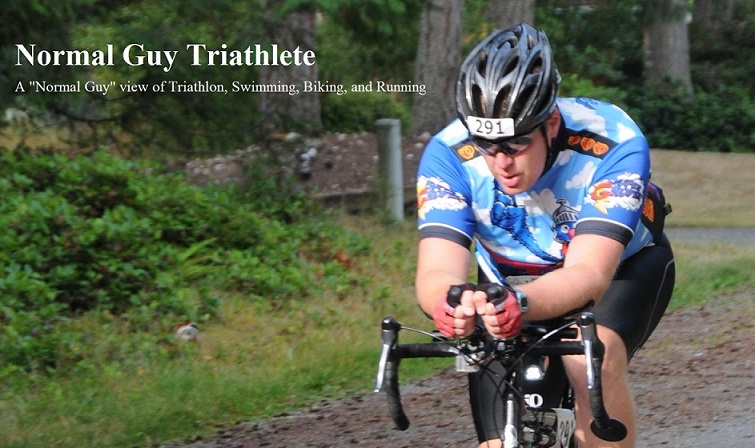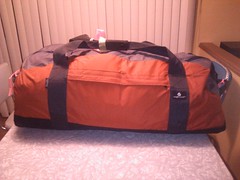8 days to go until Cycle Oregon 2011!
It is truly amazing how little time there is until the ride. This time next week I plan to be sitting in a chair as Jonathan Nicholas tells us about the grandeur of Oregon and prepares us for the week ahead.
...did I mention I haven't finished packing yet? Nope, not even close. Better get on the stick soon.
Yesterday I commented that on days 1 and 2 of Cycle Oregon 2009 I missed quite a few photo opportunities because I was riding as if I was in a race instead of a casual tour. Once I switched over from "race" to "tour" my photo count and "fun meter" both went WAY up. And so today I present, in chronological order...
The Top 10 Photos From Cycle Oregon 2009 (Not all taken by me)
1. "Where's Waldo?"- This is the second rest stop of Day 1, CO2009, just about 1/2 a mile before Siskyou Summit. I love how it shows the diversity of the riders and the social nature of the ride. There are old/young, fat/thin, tall/short, etc., and they all seem to be smiling. At least I think they are smiling even though you can't see very many faces. I call it "Where's Waldo?" because I am actually in this photo. Click on it to see the larger version (Flickr members only?). If you need a clue to find me just look at the banner at the top of this website.
 Cycle Oregon 2009 Day 1: Summit rest stop near Siskyou Summit, Oregon. Copyright Bikeportland.org
Cycle Oregon 2009 Day 1: Summit rest stop near Siskyou Summit, Oregon. Copyright Bikeportland.org
2. Summit, Day 3- This was taken at the summit of Greyback Road between Happy Camp, CA, and Lake Selmac, OR. The view is to the south from approx. 4800' elevation way up in the coastal ranges of Northern CA. The ride down this mountain was scary and winding but a BLAST! Pooh bear was my official CO mascot and will be returning with me on CO 2011. This is my third-favorite shot of the week.
 Pooh Bear at a picture stop on the way to Lake Selmac, OR.
Pooh Bear at a picture stop on the way to Lake Selmac, OR.
3. Lake Selmac in the Morning- View of Lake Selmac, OR, just as we get started on Day 4 of CO 2009. This was taken within the first mile of the day. This is my second-favorite shot of the week.
 CO 2009 Day 3, Lake Selmac, just outside Cave Junction, OR.
CO 2009 Day 3, Lake Selmac, just outside Cave Junction, OR.
4. "Where's Waldo Part 2" - I took this shot knowing it would be a fun one. There are four (4) deer in on the beach on the other side of the river. Can you spot them all? Click the link to see the larger version. Only my brother-in-law Jeff has ever spotted all 4. The only reason I know where they are is because I spotted them before I took the picture.
 CO 2009 Day 4. Spot the deer near the Rogue River. There are 4!
CO 2009 Day 4. Spot the deer near the Rogue River. There are 4!
5. Grave Creek Boat Ramp- The start of the "wild and scenic" section of the Rogue River. From here to Galice, OR, all rafters have to be licensed or accompanied by a guide due to some pretty dangerous rapids (Class 4 and maybe a 5 at Blossom Bar). As a youth this was our jumping off point for many hikes and fishing trips. It was really fun to return to place with so many fond memories. Just over my right shoulder you can see the trail we used to hike.
 CO 2009 Day 4, Grave Creek Boat Ramp on the Rogue River, OR.
CO 2009 Day 4, Grave Creek Boat Ramp on the Rogue River, OR.
6. Blues in the Wilderness - On Day 5 we climbed up a very tall mountain summiting at just over 3500' after climbing a BLM road that was easily 10% for several miles. On the other side we stopped for lunch at this little BLM campground with no electricity or running water but, hey, they had a blues band! That's one of the cool things about Cycle Oregon. Some of the locations are so remote that water has to be trucked in but it wouldn't be a real Cycle Oregon lunch stop if there wasn't live music. I kid you not. I was so stunned by the fact that they would bring a blues band out here that I took a video of it.
 CO 2009 Day 5, Lunch at Elderberry Flat Campground.
CO 2009 Day 5, Lunch at Elderberry Flat Campground.
7. Buddy - This great horned owl at Wildlife Images near Grants Pass, Oregon, just about looked right through me. He was rescued as a baby and spent the remainder of his days as an ambassador for endangered and injured wildlife being cared for at this facility. The bald eagles and Brazilian Hawks were pretty cool too.
 Buddy the Great Horned Owl.
Buddy the Great Horned Owl.
8. Sunrise Over Tent City - Taken in Riverside Park, Grants Pass, Oregon, just before I left on Day 7 of Cycle Oregon 2009 to return to Medford. The colors were amazing but the focus on my camera? Not so much...
 Sunrise over tent city on Day 7, CO 2009, Grants Pass, OR.
Sunrise over tent city on Day 7, CO 2009, Grants Pass, OR.
9. Rogue Valley Splendor - I saw this view pop up and had to stop to snap a photo. Once I did it about 30 other people got the same idea and stopped as well. It was an amazing day. This is my favorite photo of the ride.
 View of Medford wineries, Roxyanne Peak, and Mt. McLoughlin. CO 2009 Day 7.
View of Medford wineries, Roxyanne Peak, and Mt. McLoughlin. CO 2009 Day 7.
10. The Finish! - Taken by the ride photographer, RacePhotos.net. This image really captures the elation and joy I felt after completing the ride of my life: 422 miles and over 28,000 feet of elevation gain. Seeing all those locations from earlier in my life stirred some strong emotions (most of them good) and left me wanting to return. As I climbed the last hill of the ride I even imagined what it would be like to see my family at the finish line but I knew that was probably not going to happen. I hope this year lives up to my experience in 2009.
 CO 2009 finish line at Jefferson Elementary, Medford, OR.
CO 2009 finish line at Jefferson Elementary, Medford, OR.
Still counting down the days!
}B^)
 American Striped SkunkI still can’t believe this happened to me…
American Striped SkunkI still can’t believe this happened to me…




















